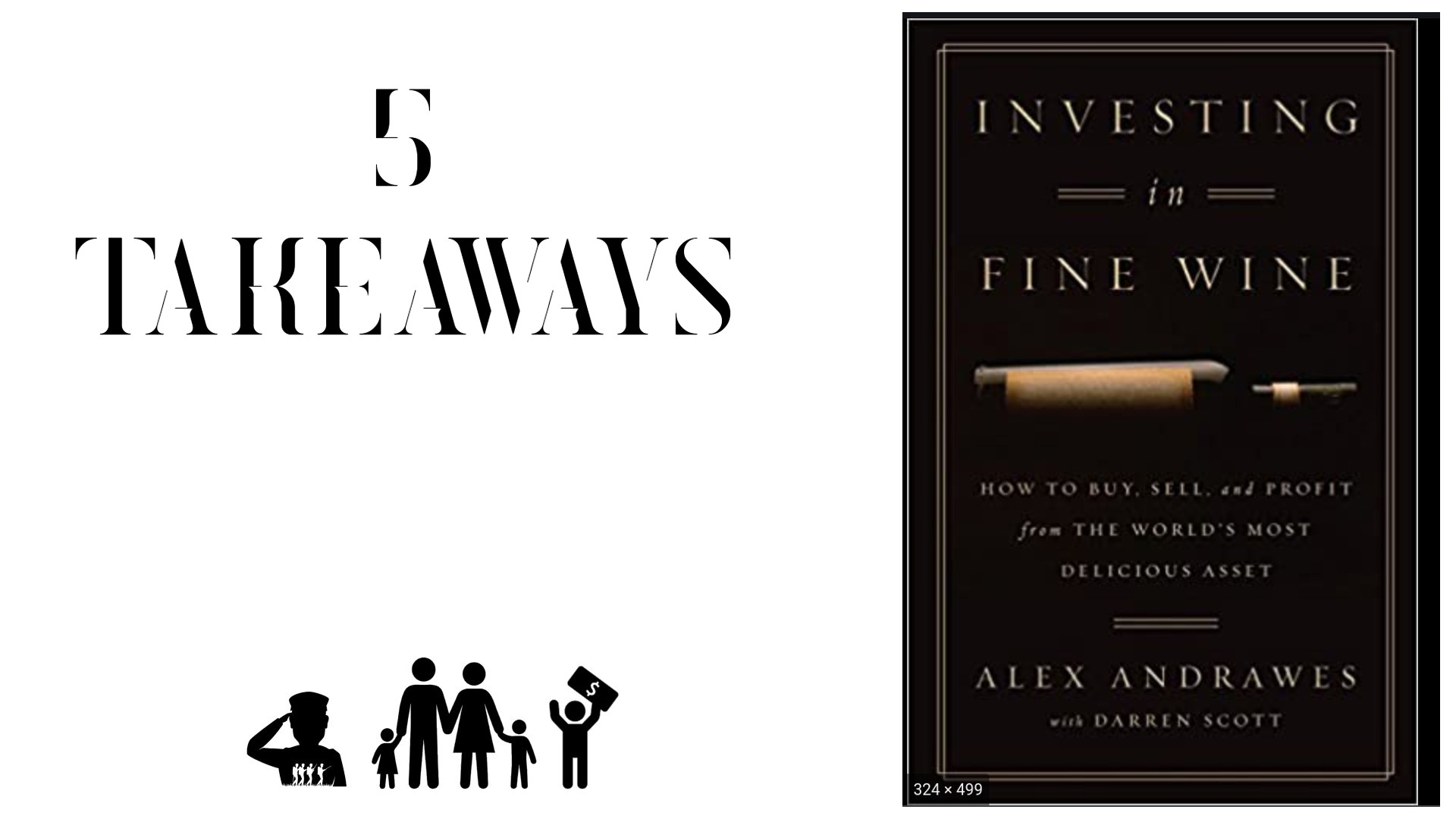“Investing in Fine Wine” by Alex Andrawes is the book I never knew I wanted to read. I was browsing Kiplinger’s personal finance magazine and saw an ad about investing in wine. I’d never thought about wine as an investment, so I decided to read a book about the process.
Wine is an exciting asset class. First and foremost, it takes a good amount of money to invest in wine. The author suggests $25,000-$50,000 a year, over ten years, to build a nice collection.
Some people buy wine as pure investors, some invest and drink, and some just drink fine wines. For many, the goal is to use the profits from wine investing to pay for their ability to drink great fine wines. It’s all relative to the investor. Let’s get into my five takeaways.
1) Rare wines are generally considered wines that sell for over $200. Fine wines sell for $50-$200. And consumer wines sell for less than $50.
2) You should invest in wine with at least a 10-year time horizon. Wines spike in value when their “drinking time” arrives. Depending on the type of wine, that can be somewhere from 3-15 years after release. As the drinking time comes, more reviews appear, and the hype train starts all over again.
3) Investing in wine is a science and art; that’s why most people use a wine broker. All states have different laws, potential counterfeit or expired wines, and general knowledge requirements. Wine takes a lot of “enterprise” knowledge to be profitable; therefore, a wine broker is probably your best option for success.
4) Wine critics are a considerable part of the value of wine. During huge events, critics taste wines and give ratings. Based on the rating, the market offers prices. However, that is just the start of the value. Over time, the value can rise and fall as more people drink the wine. Today’s “crowd-sourced” ratings can give drinkers instant up-to-date ratings.
5) The value of a bottle of wine comes down to these factors: the land, the weather, the harvest, how much wine the vineyard produced, and the winemaker. All these combine to give each wine a distinct value that fluctuates in the market.
A good wine broker helps keep your wine investments earning roughly 8-10% a year. The broker keeps tabs on how the market is pricing certain wines. Sometimes, the wine hits its peak value, and it’s time to sell.
The wine may never hit this peak again because it is during its “drinking season.” After the season, people will not want to buy it for a high price. A good broker tracks the different seasons and looks to sell at peak value.
We all need to diversify away from the stock market and crypto as investors. I have a pretty extensive video game collection. I would love to get more involved with wine; however, the price of admission is pretty steep for me currently.
I will continue to read more about wine and maybe start looking at wines at the local high-end supermarket. I think it is a fantastic investment and something that most investors would find interesting. I learned so much from this book that I highlighted over 90% of it in my Kindle—a must-read.

Leave a Reply